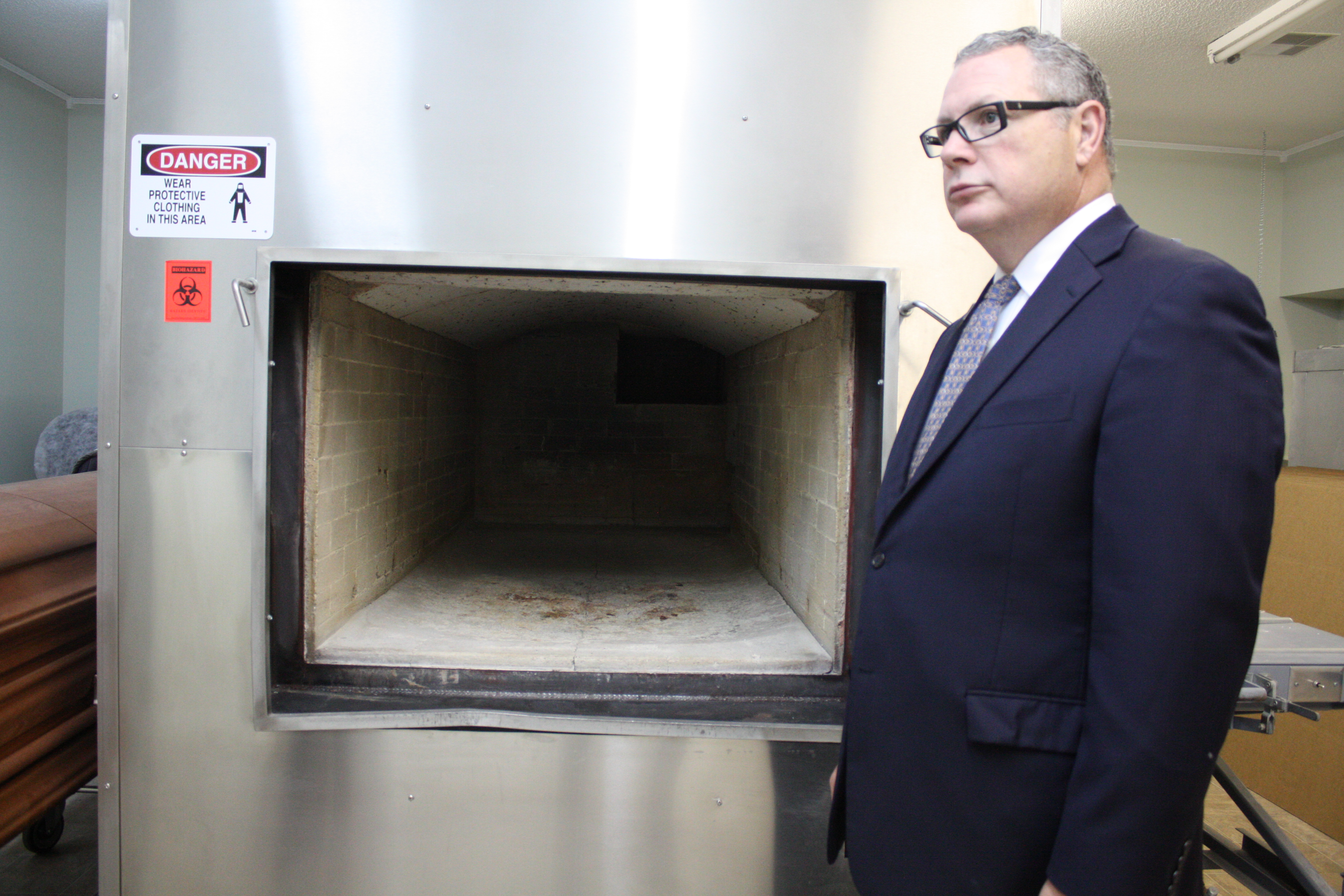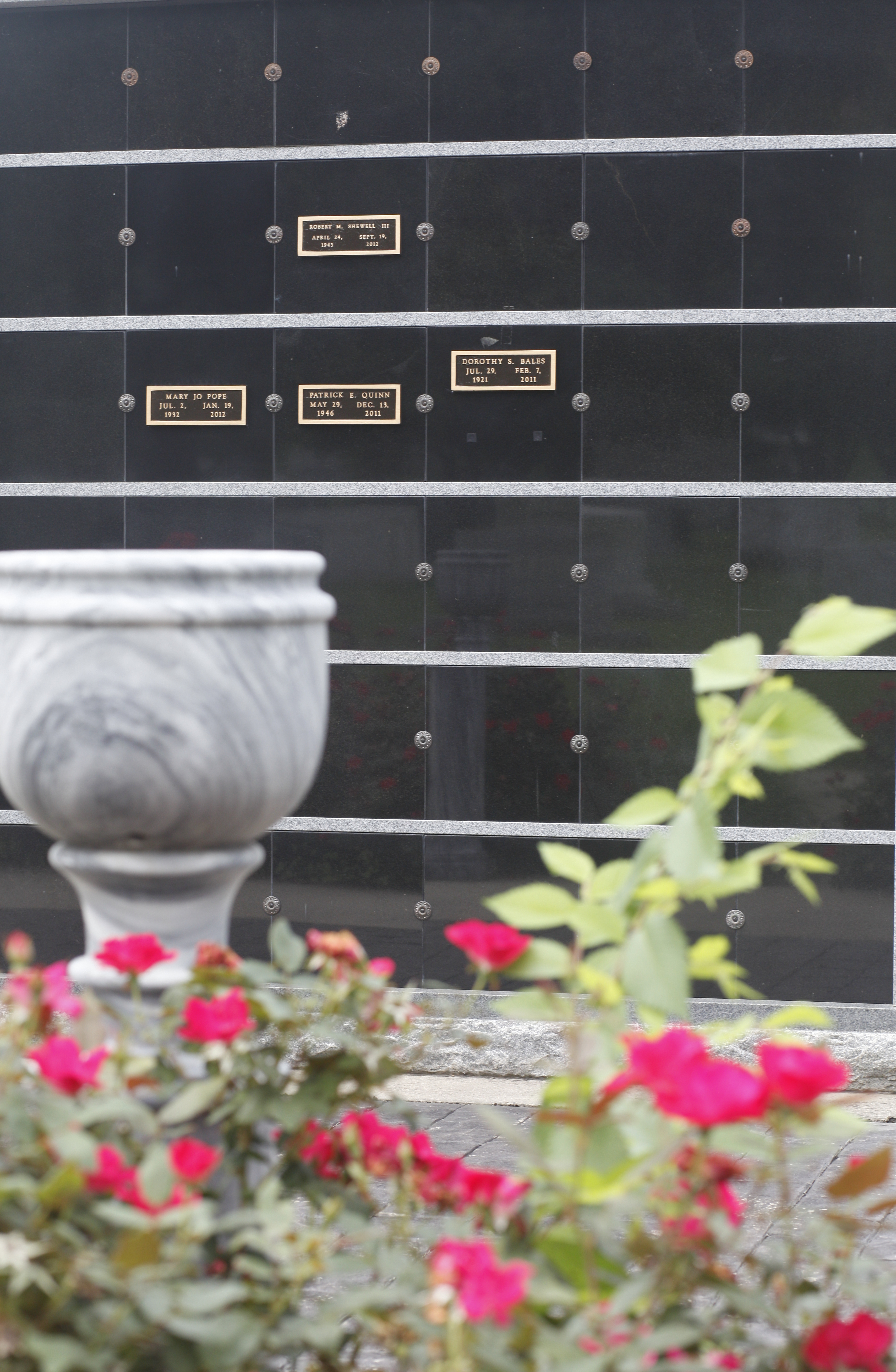Caskets giving way to urns across the South
Friday, January 1, 1904
CREMATION ACROSS THE STATESPercentage of deaths in 2010 resulting in cremation, by state:Top five1. Nevada 72.2 percent2. Washington 70.9 percent3. Oregon 69.4 percent4. Hawaii 69.1 percent5. Montana 65.7 percentBottom five47. West Virginia 23.2 percent48. Louisiana 21.2 percent49. Kentucky 20.8 percent50. Alabama 17.2 percent51. Mississippi 13.8 percentWhere we fit in37. Georgia 31.9 percent45. Tennessee 27.6 percentSource: Cremation Association of North America
Most folks will still wind up in a box six feet under. But more and more of us will come to rest in an urn. Because these days, cremation is, well, on fire. Even in the South.
Though it's been practiced since at least the time of the ancient Romans and Greeks, cremation in the modern era has been stigmatized as a cheap alternative to a "real funeral" -- the fringe of how we deal with the dead.
And it's worlds apart -- the difference between fire and earth -- from the death rituals most of us have come to know.
With the traditional Southern funeral, death becomes a long, draining march. The embalmed body, handpicked casket and the perfect outfit for a proper sendoff. The visitation. The funeral. The graveside service. The ladies who bring casseroles to comfort the bereaved.
But for many, this whole practice has become outdated.
Maybe that's because the way we live nowadays is different.
We're no longer bound to the place where we were born and grew up. People are more mobile, more apt to move far away for jobs. Since the Great Recession, we're more careful about how we spend our precious paychecks. And our society, growing less religious each year, values the uniqueness of the individual more than any in history.
So with the way we live in rapid flux, the way we handle our dead is changing, too.
Nearly half of all Americans now choose cremation, up from about 15 percent in 1985 and only about 4 percent in 1965. In some states, like Nevada and Washington, about seven in 10 deaths result in a cremation. Cremation rates in more rooted and religious Southern states have always lagged behind the coastal and more transient parts of the country.
But the South isn't holding out anymore. Tennessee and Georgia now are among the top 10 fastest-growing states for cremation. Between 2006 and 2010, Tennessee's cremation rate moved from 16 percent to 27.6 percent. And that's forcing a rapid evolution in the local funeral business.
Money and mobility play a large role in the choice to cremate, but many people are finding more meaning in the crematory than in the casket. Instead of the drawn-out funeral rite, many cremations are accompanied by a simple memorial service or a scattering ceremony. And decomposition is quicker, too -- the whole "ashes to ashes" cycle wraps up much faster.
"People want death to be convenient now," said Stonewall Ponders, who owns Ponders Funeral Home in Dalton, Ga.
He said many families see cremation as an easier alternative. Fewer decisions, less of a show.
"Out of sight and out of mind," he said. "They think it's a lot less hassle. They can take it with them."
ONE OR THE OTHER
Glenda Varnell can't get the images of her dead parents out of her head.
Their funerals seemed endless -- so many decisions, so many guests to greet. With so much going on, Varnell felt she had to put her mourning on pause just to get through the process.
And there were her parents, looking unlike themselves, covered in thick makeup. People said they thought the couple looked good, all done up.
"What I was looking at wasn't my mother and father," said Varnell, of Ooltewah. "It was just a shell. It wasn't how I wanted to remember them. ... Nobody looks good dead."
Varnell, 69, now finds herself facing death.
Diagnosed with liver cirrhosis from a fatty liver, doctors gave her just a few years to live. So one day on the way back from a checkup, she stopped off at a funeral home to make her final wishes known. She's prepaying $75 a month to make sure her body is cremated and her life is celebrated with a memorial service -- not a lengthy funeral process.
She says her decision has a lot to do with the loved ones she'll leave behind, especially her two granddaughters. She doesn't want them to relive what she experienced with her parents.
"I'm a nut. I cut up and kid around," Varnell said. "That's the way I want my granddaughters to remember me. I don't want the last thing they see is me dead and made up, looking terrible and not alive."
With cremation, there's little room for waffling. You either want it or you don't.
Todd Darnell doesn't.
His mother was the first in his family to choose cremation. And it's never sat easy with him.
She wanted her ashes scattered over St. Simon's Bay. So about five weeks after her death, Darnell honored her wishes, even though he disagreed with the choice.
"You'd have to understand my mother," said Darnell, a truck driver from Varnell, Ga. "If I hadn't done it, she would have come back and haunted me."
His father is buried in a cemetery south of Atlanta. Every time Darnell is down there, he stops by and visits the grave. It makes him feel better, more at peace.
But there's no such place for his mother. No marker with her name. No permanent memorial of the life she lived.
"It's kind of like there's something missing," he said. "She's just gone."
And for his own death, he wants the opposite route. Becoming worm food is just fine with him. At least that way, he doesn't have to imagine being burnt up.
"I don't know, ugh," said Darnell, 46. "It just gives me the heebie-jeebies."
CHANGING PRACTICE
No one expects the traditional viewing and funeral process to become obsolete. But it may become the exception, rather than the norm.
And that's a change that has come surprisingly quickly, considering Chattanooga's first crematory was installed in the late 1980s.
"I started in this business 43 years ago and we might have had one or two cremations a year. I couldn't even spell cremation back then," said Ed English, president of Lane Funeral Home.
Nowadays, consumers are getting savvy about everything -- even death. They're shopping around, comparing prices the way you would before buying a car or TV.
"They want to know up front what it's going to cost them. They don't want any surprises. And they want to know if they can afford it," said Bradley Smith, managing director at Advantage Funeral Home in downtown Chattanooga.
Funeral homes may have been slow to adopt cremation in part because of the cost -- it's generally much cheaper. The average cremation costs about $2,500, though the average traditional burial with a cemetery vault tops $7,500, according to the Cremation Association of North American and the National Funeral Directors Association, respectively.
Some Chattanooga funeral homes estimate that their business is nearing a 50/50 spit between burial and cremation.
Whether they like the evolution or not, funeral homes aren't fighting the change.
And they're still finding a way to pull a profit with cremation. Because options are only limited by the imagination.
With cremation, families can make the final resting place for their loved one's ashes as unique as the person they came from.
Ashes can be scattered at sea or buried in a shiny urn at the cemetery. But you can also have them packed into bullets, pressed onto a vinyl record or shot into outer space.
Family members can hold onto a physical piece of their loved ones -- they can bring grandma's urn home to rest on the mantle. Or wear a locket filled with a small piece of the ashes close to the heart.
Funeral homes are offering the services of dozens of specialized companies that will convert pulverized bone fragments -- "cremains" -- into ink for tattoos, paint for a portrait or even fireworks to be sent to the heavens.
But there are three options people generally choose.
Barbara Kemmis, executive director of the Cremation Association of North America, said the breakdown is about equal: About a third of families use an urn or other container and take the ashes home. The same number bury the remains or place them in a columbarium. And the remaining third of families haven't decided on a permanent memorial or choose to scatter the ashes.
Regardless of what happens after the ashes are swept out of the back end of the giant oven, some funeral homes say they are just trying to keep up with the pace.
It takes hours to handle each body, said Gene Pike, president of Chattanooga Funeral Home, which conducts cremations for several other funeral homes.
Their oven is burning seven days a week, 10 hours a day.
Contact staff writer Kevin Hardy at khardy@timesfreepress.com or 423-757-6249.


